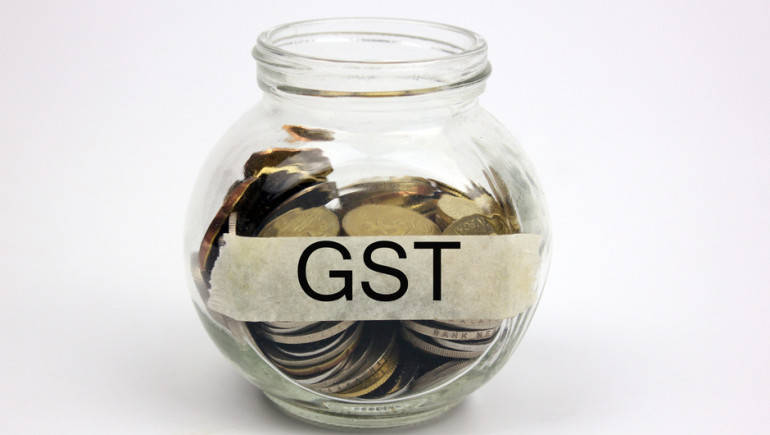Understanding IGST, CGST and SGST
What is IGST, CGST, UTGST, and SGST?
Although all indirect taxes are merged into a single tax entity
called Goods and Service Tax which is further subdivided into IGST, CGST, UTGST, and SGST wherein;
IGST stands for Integrated Goods and Service Tax
CGST stands for Central Goods and Service Tax
SGST stands for State Goods and Service Tax
UTGST stands for Union Territory Goods and Service Tax
Wherein they are governed by their respective Acts , all of 2017.

GST subsumed a number of indirect taxes of the Central government (excise duty, service tax,custom duty, etc. ) as well as of the State governments (VAT, Luxury tax, etc.), both the government now depend on GST for their indirect tax revenue. Therefore the GST rate is composed of two rates, one of CGST and one of SGST/UTGST. Therefore, while making an intra-state sale (i.e., sale within the same state), CGST collected will go to the central government and SGST/UTGST collected will go the respective state government in which sale is made. On the other hand inter –state sales and imports are governed by the provisions of IGST. Wherein SGST will be applicable for all states in the Union of India and in an union territory UTGST will be applicable.
Types of GST in India- CGST, SGST, IGST and UTGST Explained
 India is currently going through major reforms in its overall economic sectors. The growth trajectory of India is so high that it is poised to become the third-largest economy of the world by 2030. Government is taking significant initiatives to boost the overall economic growth of the country. Introduction to GST and its 3 types- CGST, SGST/UTGST, IGST will become a game change in such economic development programs. Goods and Services Tax is considered as the biggest taxation reform in the history of independent India. It subsumes multiplicity of taxes like VAT, Service Tax, CST, excise and additional excise duty, entertainment and luxury tax, etc. This uniform taxation system will help in eliminating time, cost and effort reducing cost of various goods making them more competitive. It is a consumption based tax levied on the supply of goods and services which is at variance with the present taxation principles of tax at origin. GST will transform Indian economy by turning it into one common market based on a uniform taxation system. It will enhance the ease of doing business in India. Industries will make substantial savings in terms of logistics and supply chain due to GST. Some companies will benefit more as the GST rate will be lower than the current taxation. The overall impact of GST on India’s economy is expected to be positive. Indian economy is highly diverse due to numerous industries operating in different sectors having the different location, supply chain and target consumers. To understand the detailed impact of GST, let’s discuss its three types-
India is currently going through major reforms in its overall economic sectors. The growth trajectory of India is so high that it is poised to become the third-largest economy of the world by 2030. Government is taking significant initiatives to boost the overall economic growth of the country. Introduction to GST and its 3 types- CGST, SGST/UTGST, IGST will become a game change in such economic development programs. Goods and Services Tax is considered as the biggest taxation reform in the history of independent India. It subsumes multiplicity of taxes like VAT, Service Tax, CST, excise and additional excise duty, entertainment and luxury tax, etc. This uniform taxation system will help in eliminating time, cost and effort reducing cost of various goods making them more competitive. It is a consumption based tax levied on the supply of goods and services which is at variance with the present taxation principles of tax at origin. GST will transform Indian economy by turning it into one common market based on a uniform taxation system. It will enhance the ease of doing business in India. Industries will make substantial savings in terms of logistics and supply chain due to GST. Some companies will benefit more as the GST rate will be lower than the current taxation. The overall impact of GST on India’s economy is expected to be positive. Indian economy is highly diverse due to numerous industries operating in different sectors having the different location, supply chain and target consumers. To understand the detailed impact of GST, let’s discuss its three types-
As per the Central Goods & Services Tax Act 2016, CGST is the centralized part of GST that subsumes the present central taxations and levies- Central Sales Tax, Central Excise Duty, Services Tax, Excise Duty under Medicine & Toiletries Preparation Act, Additional Excise Duties Countervailing Duty (CVD), Additional Custom Duty and other centralized taxations. CGST is applicable on the supply of goods and services of standard services and commodities which can be amended periodically by a specialized body under the central government. The revenue collected under CGST belongs to the central government. The input tax is given to the state governments which they can utilize only against the payment of CGST.
SGST is an important part of GST. It stands for State Goods & Services Tax as per the 2016 GST bill. Various taxations and levies under the state authority are subsumed by SGST as one uniform taxation. It includes the amalgamation of State Sales Tax, Luxury Tax, Entertainment Tax, Levies on Lottery, Entry Tax, Octroi and other taxations related to the movement of commodities and services under state authority through one uniform taxation- SGST. Revenue collected under SGST belongs to the State Government. However, the mainstream framework of the state governing body will be supervised by the central government. Each state will be having their own State Authority to collect SGST.
GST focuses on the concept of one tax, one nation. IGST stands for Integrated Goods and Services Tax which is charged on the supply of commodities and services from one state to another state. For example, if the supply of goods and services occurs between Gujarat and Maharashtra, IGST will be applicable as well as on goods imported into India. Under Article 269A of the Indian Constitution, the inter-state trade and commerce activities that involve the movement of commodities and services shall be levied with an integrated tax (IGST) under the GST regime. The Government of India will collect the revenue under IGST. Further changes can be made by the Goods and Services Tax Council of India.
As we have already learned about CGST and SGST which are intra-state taxations and IGST which is inter-state, the union territories in India are accounted under a specialized taxation called Union Territory Goods and Services Tax as per the GST regime 2016. It will subsume the various taxations, levies and duties with one uniform taxation in Union Territories as well. Delhi (India’s Capital Territory), Chandigarh, Dadra & Nagar Haveli, Andaman & Nicobar Islands, Daman & Diu, Lakshadweep and Puducherry are the prominent union territories in India. UTGST will account for all the taxations under these union territories in India. The parliament is looking forward to implement a separate act to impose and supervise GST in Union Territories under the name of UTGST act. The bill will be presented in respective union territories for further changes in the implementation of GST.
We at FICXSEL Consultancy Pvt Ltd being experts in the field of Indirect taxes also undertake to train and provide effective guidance in this new era of taxation reforms in India. As such we are guiding various importers regards the measures to be taken to effectively handle their trade in the revolutionary economic reform ever undertaken in India. The biggest challenge faced by many importers is regards the classification of the goods or HSN as is required to be indicated in each invoice raised now. Till date there was no such challenge since there was practically a uniform rate of duty. But now rates vary between 5% to 28%. The trade is grappling with arriving at the correct rate of duty since there is a difference in the classification or HSN arising out of lack of understanding regards the principles of classification and the laws governing the same. We are experts in the field of classification with each of the team members having experience of almost three decades in Customs matters can solve the issues plaguing classification of all goods thereby arriving at the correct rate of IGST payable.
